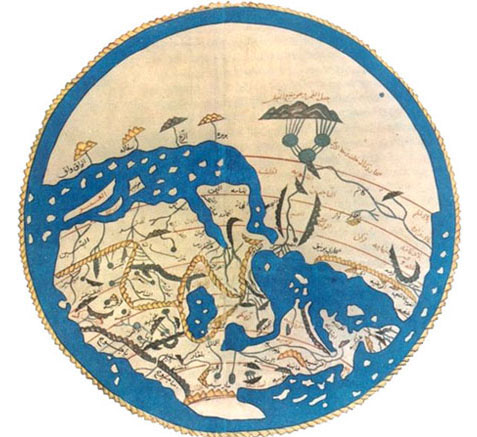Article of the Month - February 2021
“The Four Black Deaths”
(Monica Green: Independent Scholar)
Green, Monica. “The Four Black Deaths.” The American Historical Review 125 (2020): 1601- 1631.
Those who do not have access to the AHR via their institution may contact Dr. Green to obtain a copy of the published work.
Article Abstract:
The Black Death, often called the largest pandemic in human history, is conventionally de]ned as the massive plague outbreak of 1346 to 1353 C.E. that struck the Black Sea and Mediterranean, extended into the Middle East, North Africa, and western Europe, and killed as much as half the total population of those regions. Yet genetic approaches to plague’s history have established that Yersinia pestis, the causative organism of plague, suddenly diverged in Central Asia at some point before the Black Death, splitting into four new branches—a divergence geneticists have called the “Big Bang.” Drawing on a “biological archive” of genetic evidence, I trace the bacterial descendants of the Big Bang proliferation, comparing that data to historical human activities in and around the area of plague’s emergence. The Mongols, whose empire emerged in 1206, unwittingly moved plague through Central Eurasia in the thirteenth, not the fourteenth, century. Grain shipments that the Mongols brought with them to several sieges, including the siege of Baghdad, were the most likely mechanism of transmission. The fourteenth century plague outbreaks represent local spillover events out of the new plague reservoirs seeded by the military campaigns of the thirteenth century.
Keywords: Black Death, Yersinia pestis, Mongol Empire, marmots, Afro-Eurasia, historical epidemiology, biological archives, global history, paleogenetics, Samalas eruption, Fall of Baghdad, environmental history, long-distance trade, Global Health, pandemics
Nomination Statement:
Monica Green’s article makes a powerful, detailed and cogent statement -- based ona mastery of the very latest archaeogenetic research as well as an amazing variety of texts -- of bubonic plague as essentially a trans-Asian phenomenon beginning in the thirteenth century, and not, as usually presented, a Mediterranean and European one beginning in the fourteenth. This is a field-transforming article.
Author’s Comment:
This recognition of "The Four Black Deaths" for the Article of the Month recognition by the Mediterranean Seminar is deeply meaningful for me. My headlong dive into this interdisciplinary work on the origins of the world's most devastating pandemic arose out of concerns that I didn't have a better story to tell my students in the classroom about how a catastrophe of this magnitude could have happened. The principal stories that have always been told about the Black Death's origins were both self-contradictory and vague. Clearly, there must be a story beyond the "throwing bodies over the walls of Caffa" narrative (which has now been proven to be a fiction: Barker 2021). But what was it?
As a historian of medicine specializing in medieval Europe, I had always wanted better stories to tell of not only plague but also the other quintessentially medieval disease: leprosy. And that's why I initially started paying attention to work in the palaeosciences over 20 years ago. Paleopathology (the study of lesions visible on bones) could document patterns of leprosy distribution, but could do nothing in documenting plague because it kills too quickly to leave visible traces. At first, I was skeptical when I started hearing, around 2005, of claims that Yersinia pestis genetic material had been retrieved from pre-modern graves. If the biologists themselves were arguing so fiercely about these results (and they were!), could we historians put any trust in the announced results? Because I had been trained as a historian of science, I knew how to watch scientific debates from the sidelines. So that's what I did for a number of years. By 2012, however, once whole genomes from 14th-century plague cemeteries had been retrieved, I was convinced that these new scientific claims could be trusted. Yes, Yersinia pestis, the bacterium that causes plague, could be accepted as the pathogen involved in the Black Death.
But then the question was, "So what?" How does this finding change how we need to think--what we need to do--as historians? The answer to that took a bit longer, but it was revelatory. The "new genetics" of infectious diseases allows us to track diseases over space and time. As historians, we can now do our customary change-over-time analyses at the level of bacteria, and not just human actors. And that, in essence, was what eventually allowed me to piece together the story of the Big Bang and recognize the role that the Mongols seemed to have played in distributing plague across much of Eurasia. This happened in the 13th century, not the 14th century, and I suspect that the Mongols themselves may have been unaware of the role they were playing in moving this astoundingly lethal disease around.
I have already offered a long Acknowledgements section in the published paper. But I want to again stress how many levels of expertise go into an analysis that moves across so much geography and time, and across so many disciplines. I expect that details of my arguments will be challenged. I hope that certain claims will be superseded by better work by others who are more skilled than I in the languages and cultures that were tied, even at a distance, to the late medieval Mediterranean.
Would you like to discuss this article?
Start a thread on the Mediterranean Seminar list-server
See the other Articles of the Month here.
